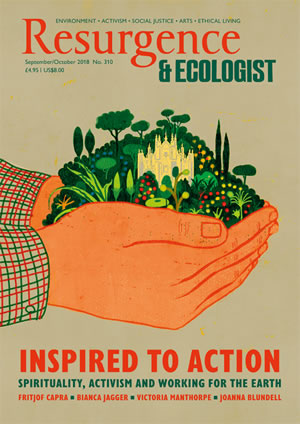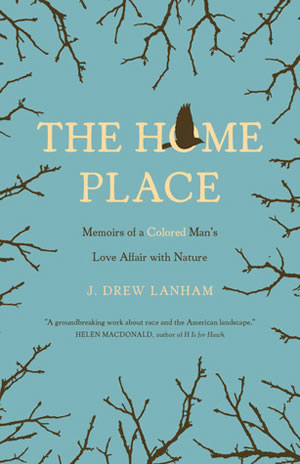I searched out J. Drew Lanham’s engaging memoir after reading his article on extinction, race and slavery in this spring’s issue of Orion, the American magazine of people and Nature. I was discussing white privilege and identity with my friend Judy Ryde, who is completing her own book, Facing Up to White Privilege. Putting the two together drew attention to the limitations of my own perspective: I had never made that direct link between racism and ecology before.
Lanham introduces himself in the first pages of his book: “I am a man in love with nature… an ecoaddict, consuming everything that the outdoors offers… I am an ornithologist, wildlife ecologist, and college professor. I am a father, husband, son, and brother.” It is not until the third paragraph that he writes, “I am a man of color – African American by politically correct convention.” And we are drawn into the contradiction: “I am as much a scientist as I am a black man; my skin defines me no more than my heart does. But somehow my color often casts my love affair with nature in shadow. Being who and what I am doesn’t fit the common calculus.” Hence his memoir of growing up in rural South Carolina, a “tale of an in-between place and its in-between people”.
In the early chapters we are taken into the experience of a boy living at The Home Place, a smallholding on which his parents labour to grow produce while at the same time working as schoolteachers. He writes of his childish curiosity, roaming free in a place rich with wildlife, growing up buffered in many ways from the outside world: “Mama and Daddy were progressive thirtysomethings who’d come through the 1960s civil rights movement. They were still overcoming discrimination but saw a way to provide better for all of us.” There is a affectionate portrait of his grandmother, Mamatha, born one generation removed from slavery and steadfast to traditional beliefs; of his stern but loving father, who died all too young, most likely from overwork and the masculine propensity to ignore signs of ill health; and a fascinating account of his parents’ search for a Baptist church within the black culture but also liberal enough to suit their worldview. (There was an all-white church nearby that was quite out of bounds for black folk.)
This idyllic childhood is ruptured by his father’s death and Lanham’s move to Clemson University to study engineering (a field thought fitting for a black kid good at maths and science). He is an obedient young man, but “after three years of suffering through what others had planned for me” he switches to his real love, ornithology. He learns fieldwork with a feminist ornithologist whose work aims to undermine the myth that bluebirds are monogamous, heterosexual, and married – an encounter with a different worldview that moves him to question the social conventions he has adopted without reflection. This early training in scientific ecology enables him to move on to graduate work and an academic career.
So far there have only been passing references to racism: the following chapter is titled ‘Birding While Black’. The reader turns the page to be confronted by lines from the protest song Strange Fruit, memorably sung by Billie Holiday, and Lanham’s introductory sentence, “It’s only 9.06am and I think I might get hanged today.” Lanham is working on a field study. The rubric is to drive five miles along a country road, stop and record all the birds seen in a three-minute interval, drive five more miles and repeat. One of his stops takes him close to a house where a Confederate flag proudly flies; a dog starts barking furiously. What is a black man in a car doing here, peering through binoculars? He feels sick, remembers images he has seen of lynching parties, is quite incapable of recording any birds. Several related stories are enough to convince the reader that being a black ornithologist presents challenges white folk might not dream of.
In the last chapters Lanham tells something of his search for his African identity. He recalls watching the TV programme Roots in the late 1970s and writes warmly of his memories of his family community. But as time passes and this community withers, he searches further. He finds the grave of one black slave ancestor, and discovers that he just might be related to one of the last Africans to be imported into the USA – illegally smuggled 50 years after importation was abolished. A librarian shows him a picture, which stuns him, of “a woman, more African than American, with my last name”, who suffered under a cruel owner. He describes the rush of complex emotions, anger and sorrow, but also pride that his family somehow rose above those inhumane experiences to become farmers and teachers and college professors.
This is a gentle memoir, not a polemic. As a white reader, I find it all the more powerful for that. These glimpses of a black man’s life offered me some access to a different perspective on the world. Lanham’s Orion article, ‘Forever Gone’, is more direct. In it he writes passionately about the extinct Carolina parakeet, a colourful bird that used to flock around the southern fields and forests, doomed through loss of habitat and the fashion for feathers in ladies’ hats. The last known individual died in Cincinnati Zoo in 1918: another Gone Bird, as Lanham calls them. But there is something that for Lanham marks out the parakeet from other extinct American birdlife. It was an intelligent bird (as are all parrots, sociable and with a sense of themselves) that frequented the same fields his enslaved ancestors toiled in. More than that, at night the parakeets would retreat to the swampy woodland where Maroons, self-liberated slaves, also found refuge: both raided the plantations for sustenance; both shared a “requisite for freedom”.
This association makes him uncomfortable with those eco-restorationists who desire to return ecologies to a pristine ‘baseline’ wildness they believed existed before human impact. Who gets to say what wild Nature really is? And the desire for a humanless wildness belittles the “red, brown and black” land connection, the work of enslaved people and the Indigenous Americans before them who so profoundly shaped the land. Lanham wants us to understand that “in the convergence of demands for human dignity and freedom, and nonhuman survival and existence, there are islands of empathy that emerge between our braided-river beings.”
Racism and extinction both arise from a “corrupt human belief that some are worthier than others… Whether racism, or sending another species into the oblivion of extinction, they both grow from the same rotten core.”







